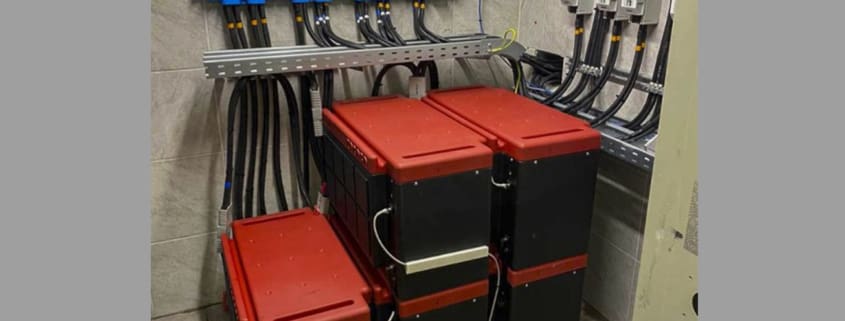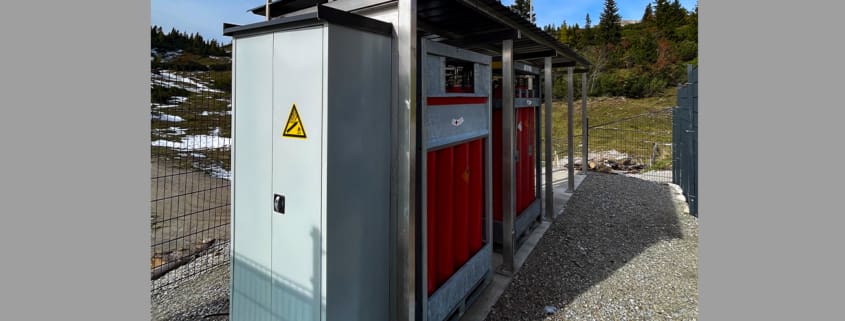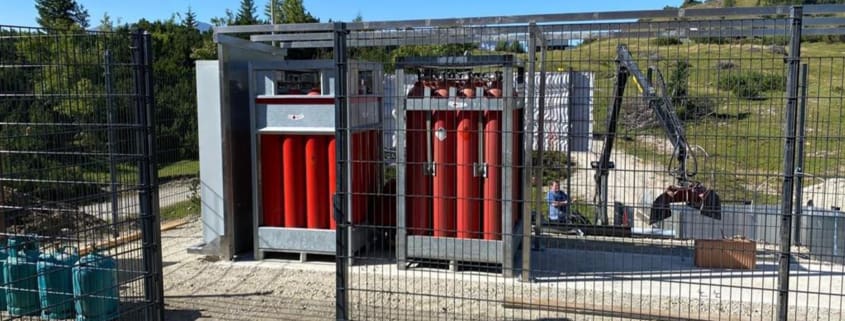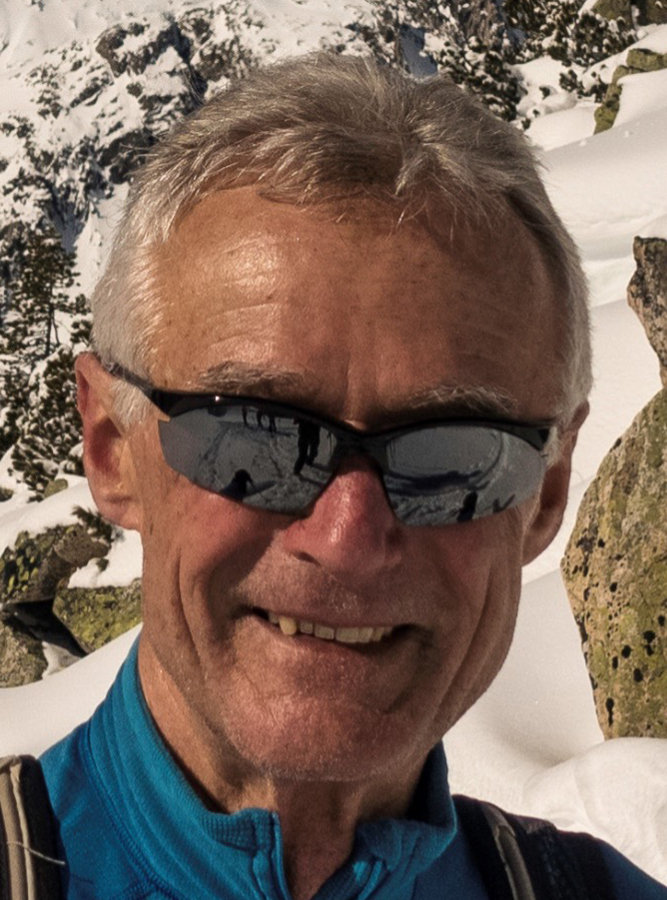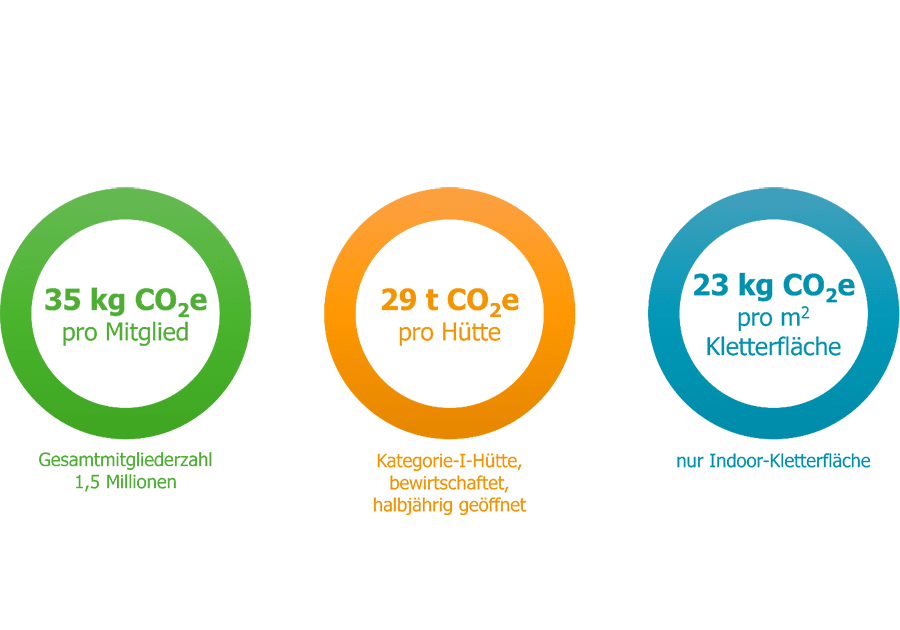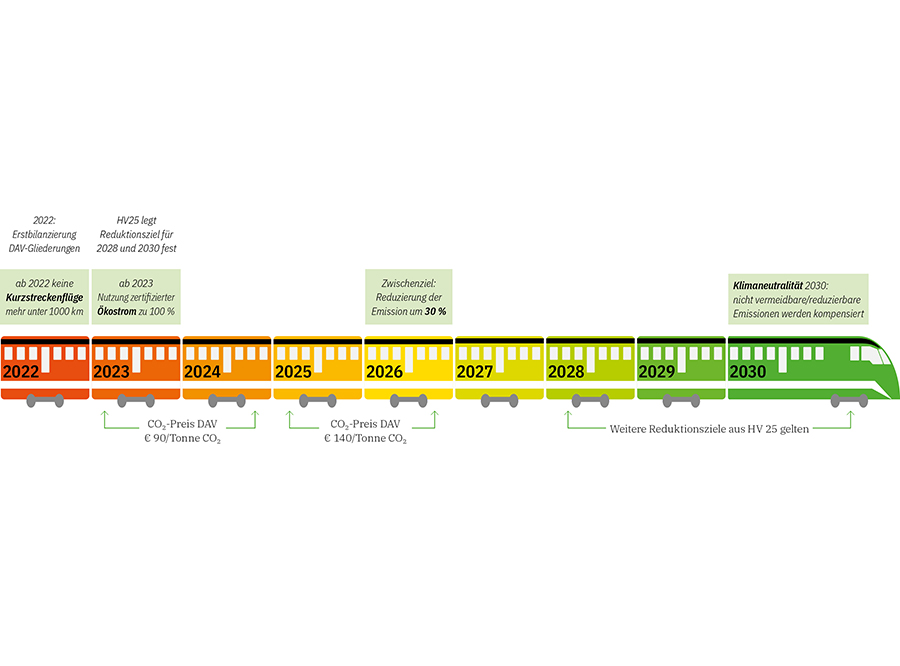The peak of sustainability —
Remote huts high in the mountains are far away from utility or gas grids. So how do they supply their growing numbers of overnight guests? Some lowlanders might imagine mountain fare being cooked on a wood-fired oven and enjoyed by candlelight. But the reality is far different—because the Alpine associations that run the huts have an astonishing capacity for innovation.
Victoria Habersack and Florian Todt have been running a hut called Sonnschienhütte at an elevation of 1,523 meters (4,997 feet) since December 5, 2023. This is Austria’s first Alpine Association hut to be equipped with a hydrogen system for completely CO2-free power generation. Electricity is produced by a PV system throughout the day, and any that isn’t consumed and can’t be accommodated by the battery storage system is converted into green hydrogen by means of electrolysis. If necessary, a fuel cell can convert this hydrogen back into electricity, which can then be fed into the household grid.
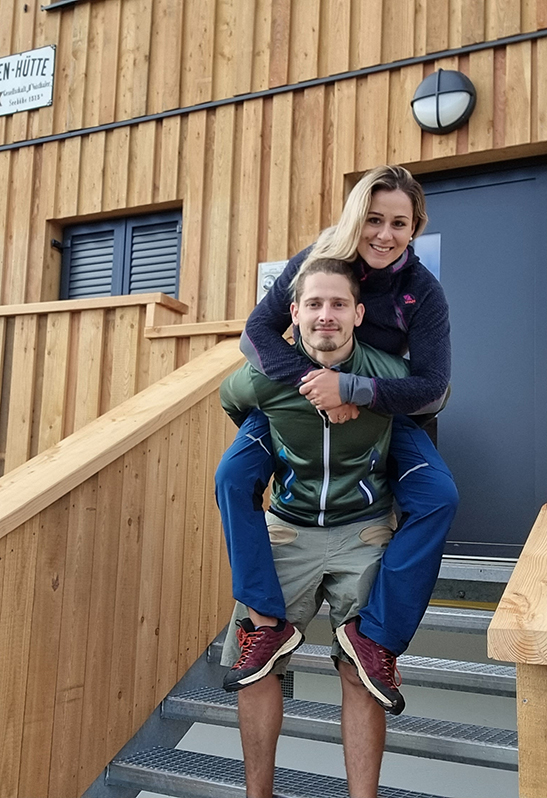 Austrian Alpine Association archive
Austrian Alpine Association archiveVictoria Habersack and Florian Todt in front of the thermally and energetically renovated Sonnschienhütte and the Sonnschienhütte at an altitude of 1,523 metres.
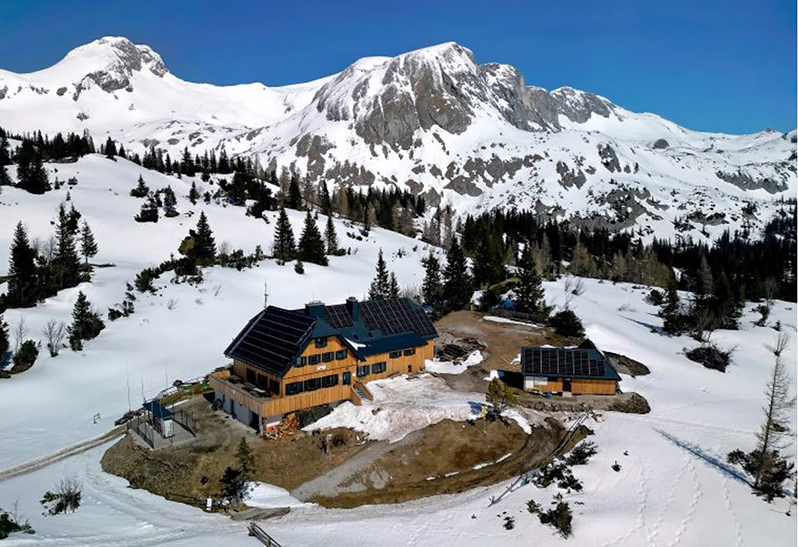 Heinz Toperczer
Heinz ToperczerThe new tenants were immediately impressed by the hut and its freshly upgraded heating and energy systems. “We’re both young and find progressive technologies exciting,” they say. And protecting the climate and environment up here in the mountains was already an issue close to their hearts. At Sonnschienhütte, they now have their best chance to offer their guests a “fossil-free” stay. Based on simulation calculations, they also won’t be needing the backup generator that runs on rapeseed oil, something that Dr. Richard Goldeband is very pleased to note.
Goldeband oversaw Sonnschienhütte’s energy upgrade in his role as the managing director of the Austrian Alpine Association and technical adviser for the association’s huts. He asked himself how the excess energy produced by PV systems could be put to better use. And the answer he came up with was a system that generates and stores hydrogen as well as converting it back into electricity. “I managed to get the planning experts on board with the idea, so we came up with a concept,” he says. “And we found a company that liked the project and was able to deliver and install all the components we needed for the system.”
From Dr. Richard Goldeband’s perspective, a hydrogen system with a sufficiently sized hydrogen accumulator fits in perfectly with the Alpine Association’s sustainability strategy. “This represents a big step in our ongoing efforts to equip huts with a more eco-friendly energy supply. If the hydrogen system at Sonnschienhütte proves successful in operation, which I am convinced it will, the concept can then be implemented at any hut that needs an upgrade or replacement of its power generation system.”
“This represents a big step in our ongoing efforts to equip huts with a more eco-friendly energy supply. If the hydrogen system at Sonnschienhütte proves successful in operation, which I am convinced it will, the concept can then be implemented at any hut that needs an upgrade or replacement of its power generation system.”
– Dr. Richard Goldeband, Managing director of the Austrian Alpine Association
Island high in the mountains
Alpine Associations in Germany, Austria, Switzerland, France, Slovenia, Italy and Spain operate a diverse network of huts ranging from shelters in extreme locations to Alpine inns in areas frequented by large numbers of guests. PV systems have long been the standard here. And this makes sense, because unlike diesel, rapeseed oil or liquid gas, this energy supply doesn’t need to be transported long distances from roads or stored where there’s limited space.
Achieving self-sufficiency is a relatively simple process in the case of no-frills accommodation, where PV systems at campsites often function with 24 V direct current primarily used for lighting. But at the big facilities that are serviced all year round, meals need to be cooked for hundreds of guests, drinks cooled and rooms heated on a daily basis. And electricity is needed for water supply systems that are also self-sufficient and are equipped with systems for harvesting and treating the water as well as pumps. In situations where there is little or no solar irradiation, a generator that runs on diesel or rapeseed oil is generally used to compensate for the energy shortfall. Battery storage systems are also a standard solution, but the lead-acid batteries used for many years to bridge gaps in the power supply suffered rapid drop-offs in performance in cold conditions.
Photovoltaics on the up
Photovoltaics are now playing a greater role as a single source of energy for large mountain huts. To some extent, this is simply because they eliminate the transport of tons of diesel for generators or combined heat and power plants, which is often brought in by helicopter. But another factor is that it’s easier to install and maintain just one type of technology.
Given the availability of long-duration lithium-ion battery storage systems and increasingly powerful solar cells, solar power is increasingly becoming an option for hot water and heating instead of the solar-thermal collectors that were often used prior to this. Another factor is that photovoltaic systems operate very efficiently in the mountains—solar cells work especially well at cool temperatures, and there are naturally more hours of sunlight above the fog line than in the valley below.
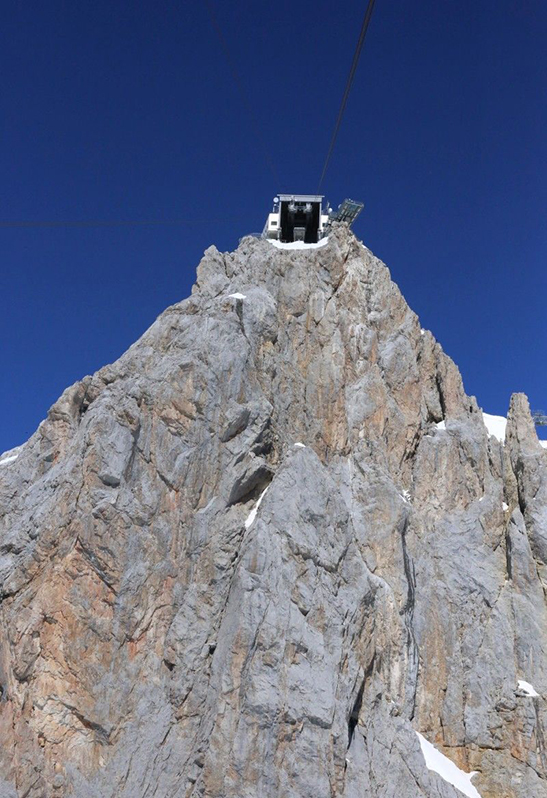
SMA has already been involved in fitting solar energy systems at a large number of mountain huts. “The key solution here is our Sunny Island battery inverter,” says Gerd Fischer, Technical Consultant Austria for SMA Solar Technology AG. “The inverter creates an AC network to which both consumers and producers can be connected. It acts as a system manager by charging the batteries, inhibiting the SMA photovoltaic inverters of the PV system when the batteries are full and, for example, starting the rapeseed oil generator if necessary. In other words, an SMA Sunny Island system is an ideal way of setting up a reliable stand-alone supply for remote mountain huts with a power consumption of up to around 200 kW.
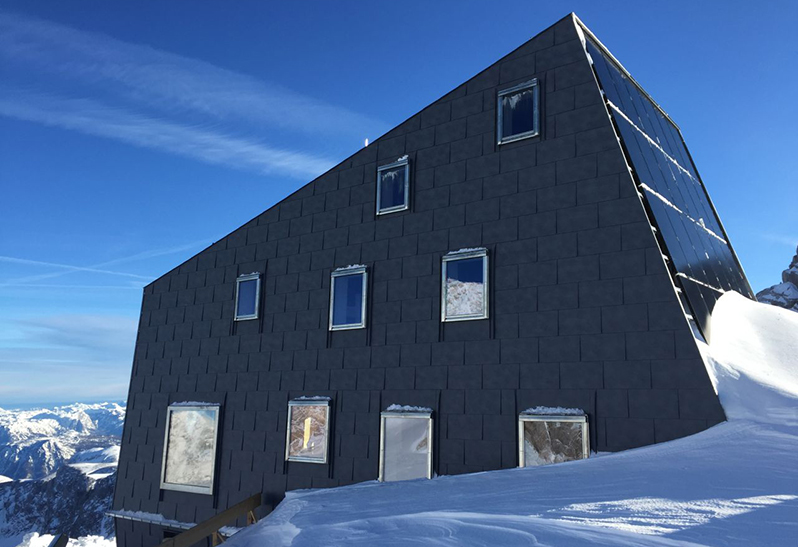 Austrian Alpine Association, H. Herzog, R. Goldeband, N. Ruprecht
Austrian Alpine Association, H. Herzog, R. Goldeband, N. RuprechtAiming higher
Back in 2021, the German Alpine Club (Deutsche Alpenverein (DAV)) set itself the ambitious goal of going climate-neutral by 2030. And for the world’s largest mountaineering association, this means going genuinely climate-neutral through its own activities—compensating for emissions via certificates or dedicated projects, for example, would only be a last resort.
One reason the club is tackling this issue head-on lies in the nature of the situation itself, as the Alps are warming even faster than the global average. If you spend time in the mountains, it’s impossible not to notice the impacts this is having. Which is why over 80 percent of the members who attended the DAV annual general meeting in 2021 voted in favor of a climate protection plan that might not have been passed elsewhere.
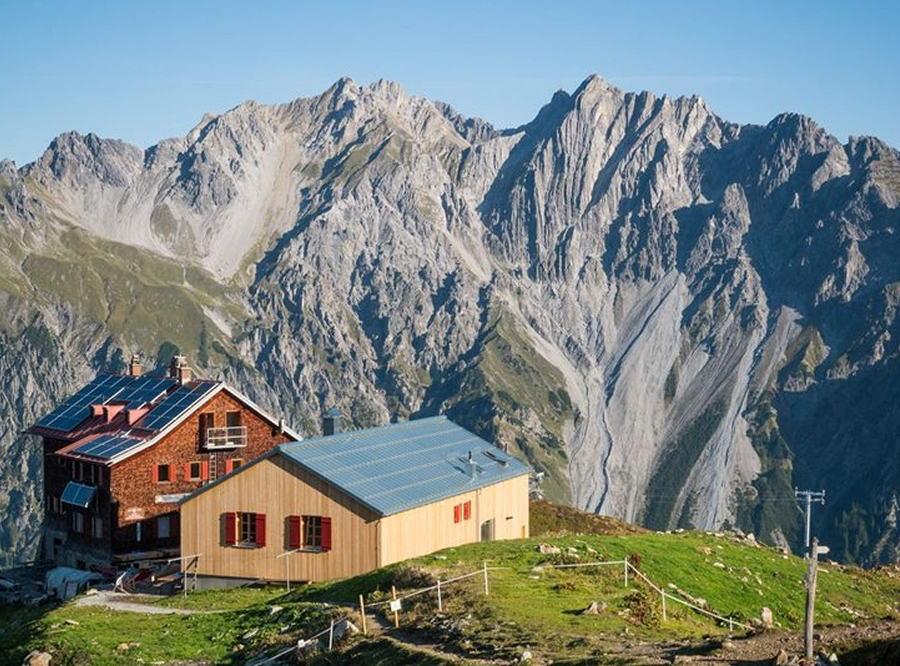 Jürgen Gassner
Jürgen Gassner
The 325 huts managed by the German Alpine Club offer mountain sports enthusiasts around 20,000 places to sleep and 24,000 guest areas. The huts in the DAV network welcome some two million day visitors every year and total 890,000 overnight stays
“We’ve been a recognized nature conservation association in Bavaria since the 1980s, and now throughout Germany and in Austria as well,” says Johanna Felber, a member of the climate protection team at DAV headquarters. “Nature conservation has long been an integral part of the work we do at DAV, which includes delivering opinions on development activities in Alpine regions. So taking this stance on climate protection was only logical for us.”
Sound climate protection measures are planned on the basis of counted and projected emissions.
The key element guiding DAV towards climate neutrality by the end of this decade (!) is an internal carbon price that some organizations can only dream of. The DAV clubs have committed to initially pay €90, and then €140 from 2025, into a climate protection budget for every ton of CO2 that can be attributed to them. The clubs manage these budgets themselves and use them to fund climate protection measures, such as upgrading energy systems in their huts. Johanna Felber of DAV notes that the huts being upgraded are primarily large ones offering services. And DAV implements an impressive 20 to 25 major hut projects every year.
Balancing motivation and incentive
More and more people are enjoying sports and holidays in mountain regions. Tölzer Hut, for example, has seen its average guests double in the space of ten years, and this number is continuing to rise. At the same time, serviced huts are facing higher expectations. While dormitory accommodation used to be the norm, now there are reservation portals, single and double rooms, vegan options, Wi-Fi and showers instead of a quick splash of cold water.
And the energy concepts being used to modernize the facilities live up to these expectations. Seven modules were added to the PV system at Tölzer Hut in summer 2023, which means its combined heat and power plant is only needed in inclement weather. The same is true at Coburger Hut, where the photovoltaic output was nearly quadrupled from 4.4 to 16 kWp and a more powerful battery storage system from Tesvolt, a SMA Solar Technology partner, was installed.
Protecting the environment while meeting the expectations guests place on comfort is a balancing act for the German Alpine Club. Hospitality is a yes, but arriving by car a no. Serviced huts are being upgraded first and foremost, and the Club is looking to boost the trend towards no-frills accommodation. “These are issues we’re discussing a lot at DAV right now,” says Johanna Felber, who recommends a podcast episode focusing on this topic.
Meanwhile, Victoria Habersack and Florian Todt of Sonnschienhütte, the first hut we looked at in this article, are still keeping an eye on their hydrogen system’s display: “The system still needs fine-tuning, of course. You should always keep an eye on the current readings for the battery status and hydrogen accumulator, error messages and the weather—and above all, you need to understand how the system works,” the pair say. But when it comes to managing these requirements, we’re absolutely certain they’ll make it to the top.


